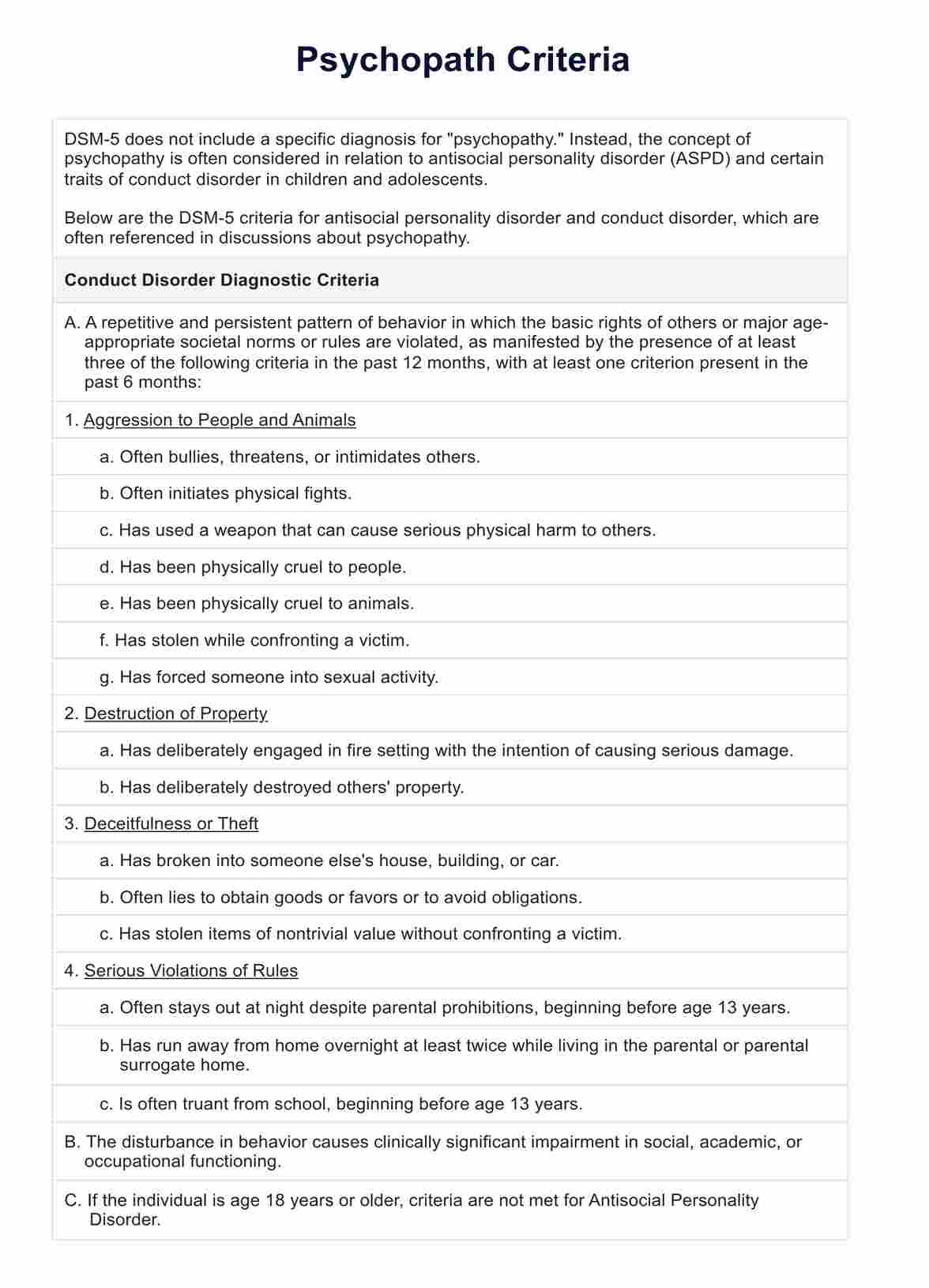The DSM-5 does not have a specific diagnosis for psychopathy but includes criteria for related disorders such as conducted disorder and antisocial personality disorder (ASPD), which share some traits with psychopathy.

DSM 5 Psychopath Criteria
Explore our free, printable template with DSM-5 criteria for disorders related to psychopathy, designed for quick reference and patient education.
Use Template
DSM 5 Psychopath Criteria Template
Commonly asked questions
Yes, psychopathy as a distinct diagnosis was removed from the DSM in its third edition and replaced with antisocial personality disorder (ASPD).
The DSM does not distinguish between sociopaths and psychopaths. People believed to fall under these terms display symptoms of antisocial personality disorder (ASPD).
EHR and practice management software
Get started for free
*No credit card required
Free
$0/usd
Unlimited clients
Telehealth
1GB of storage
Client portal text
Automated billing and online payments











